Vadodara, 18 January 2000
The Project
Maybe this is as good as any time to write about how my travel to India had eventuated. Michael and I had become friends during my employment at the Queensland University of Technology in Brisbane in the early nineties. Coincidentally, we had studied at the same time at the Sydney College of the Arts in Sydney, in the late eighties.
He hired me from time to time to lecture on industrial design and ingeneering subjects pertaining to architecture and when he planned taking students to India for a summer school project in conjunction with an Indian university, he invited me to accompany him as a tutor.
Back to the story and the time when we arose on our first morning in Vadodara.
Meeting the Indian Team
After our late night / early morning arrival and ongoing discourse, it was around midday by the time we entered into daylight and open air. Red-eyed and hungry we noticed about forty young people sitting and walking around in the gardens around the hostel houses.
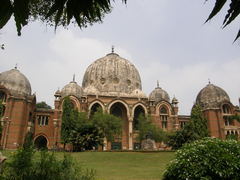
Gently they greeted us, and we found out that they were the students and lecturers with whom we were to carry out the project. Who knows for how long they had been waiting, we had not heard anything telling their presence.
There was Moira, the lecturer in architecture who was in charge of the project. Her colourful sari and black satin hair were most outstanding. Indian people always look younger. Still, I guess she was in her mid-forties, but probably, I was wrong.
There was Ravi, the international liaison man, Paul’s counterpart, the one with whom he had arranged the collaboration.
Our first real Indian experience happened when we made our way to the Faculty of Applied Science. Up to this time, we had been in the hands of a tourist organisation, but for the next two weeks, we were on our own. How would we get there?
Most Indian students owned motor scooters or mopeds, and since there were almost twice as many Indians, the teaming up went quickly, and the students evaporated in a cloud of dust and smoke.
Us, more dignified people, refrained from such methods of transport and relied on motor rickshaws, following the crowd in a meaningful distance.
Three of us squeezed into a seat fit for one and a half person. But jammed between Moira, not as stern as in the presence of students and a younger female assistant, I would not complain, even it had been a slightly unmanning experience, initially. Personal space in India hardly exists.
The Room
We approached the faculty building from behind, a place with racks for hundreds of bicycles. By the time we arrived, the students had been immersed in getting acquainted and later, when it came to sorting out teams of five of six members most of them had formed their groups, already.

The building was still locked, and Moira selected from a big bunch of small keys the one to open the latch lock for each of the many ceiling height wire mesh gates on every floor.
Our basketball field size room was on the rooftop. It had a small stage in one corner. The open space was filled with scattered groups of tables and chairs and plenty of vacant space for students to arrange in groups and set up their workplaces.
Large windows opened towards the roof gardens, from where we had a good view across the street to the Laxmi Vilas Palace and its surrounding parks (more about that later). Its Indo‑Moorish architecture attracted me very much, and the next day I sketched a drawing from a turret at the roof of the school.
Familiarisation with the Project
The assignment revolved around an artificial lake in the city centre. For some reason, it had turned highly polluted. We were to perform an impact study on the causes and effects of this pollution, develop ideas for the lake’s sanitation with consideration of the social impact and town planning aspects.
After about an hour’s talk of introduction and the announcement of timetables, the students were released to explore on their own.
Background Information
The city of Vadodara is located in western India, in Gujarat State, on the Vievamitra River. It was here, at the Maharaja Sayajirao University opposite the Laxmi Vilas Palace where the student project would take place. The faculty of Built Environment was located in the same building as applied mathematics and applied physics.
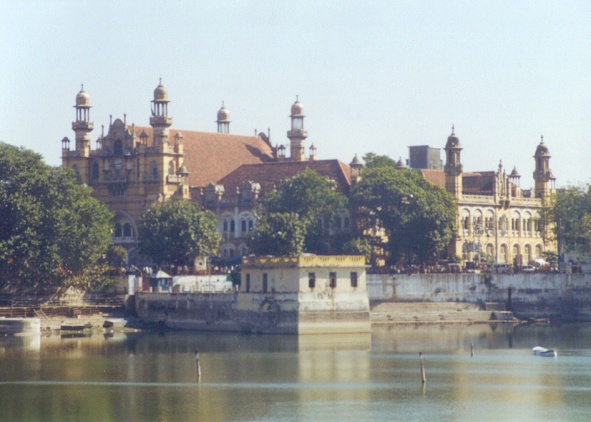
The project centred around Sur Sagar, the ceremonial artificial lake in the centre of the city.
Originally, the lake was built as a water reservoir, all surrounded by stone walls. Through the vicinity of the Vievamitra River and its location in the vast Indus delta, the groundwater level was high, and many creeks supplied plenty of fresh water to Sur Sagar.
Surplus water could run out through overflow pipes at the upper edge of the lake walls. In the past, the people living in the surrounding suburbs consumed the fresh water. In these days it was clean and plentiful.
Later a three-storey high statue of Sarveshwar Mahadev’s Murti with his trident was erected in the lake, and it became a deposition place for sacrifices. Even though this tradition caused some pollution, the lake usage for water supply had remained sustainable.
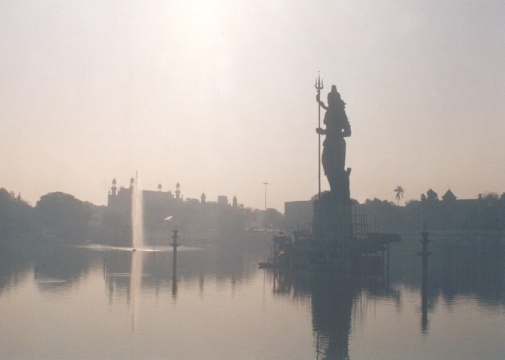
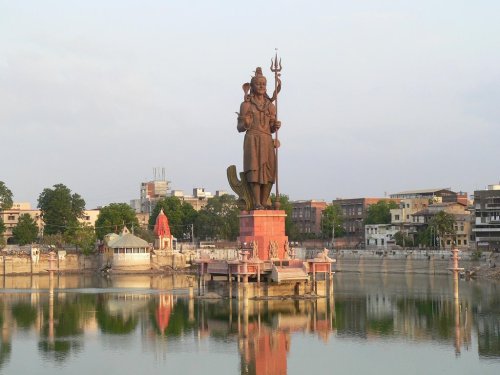
However, in recent times, housing development had commenced on the land at the city’s outskirts. The nearby swamps had been drained, causing the water level to drop. Also, several natural tributary wells had been enclosed or redirected.
The water level in the lake had dropped so far that even during heavy rainfall the height of the overflow pipes was never reached. Therefore the water had become stagnant. For years now, the inflow mainly consisted of rainwater from the roofs of the houses, surface runoff from the surrounding streets and greywater. Evaporation increased pollution concentration even more.
Sur Sagar has turned into a pond of dark, smelly sewage, but this fact does prevent people from still throwing sacrifices into the water. On the south-eastern side, a broad set of stairs led down to the surface, where people nevertheless performed ceremonial bathing.
The latter is worse because they get sick from it. But being firm believers, illness is considered a well deserved and accepted punishment from the gods because it gives them redemption. The previously mentioned Indian proverb: “Even dirty water washes clean” had another meaning added to it.
§
During our investigations, we heard local tongues tell about the smell on hot days being vile and putrid, and clouds of stench crawled up the street to the nearby city hall where the rulers of the city had to close the windows and sweat in the hot rooms. This discomfort had moved them to act, finally.
To my utter surprise, many giant turtles were living in the lake. Their black glossy back shields emerged out of the dark water like submarines. At the time of our visit, the statue was under renovation and was enclosed with scaffolding. The plan was to have it gilded.
As We Went Along
Even in a city of over one million people, fifty students circling around Sur Sagar equipped with notebooks, cameras and measuring tools had not remained unnoticed for long. After three days, the project was announced in the newspapers and on television.
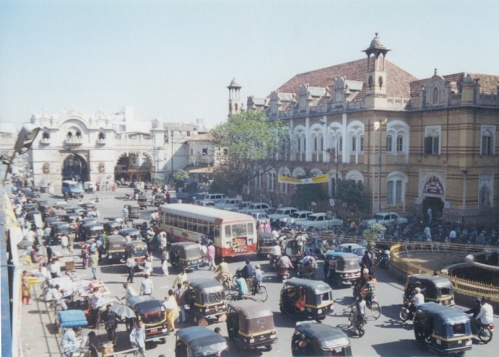
Using this publicity one of the Indian lecturers approached their government for some financial support, which was provided quite spontaneously.
The locals greeted the students with a smile of recognition, and because the groups always consisted of Indian and Australian students, language was never a problem when locals wanted to comment on our work or ask questions. They enjoyed the “limelight”.
§
Shortly after, one of the opposition parties established a stall at the railing of the lake, instigating conversations with passers-by and providing the students with information about past and recent records. Occasionally, discussions would flare up, much to the surprise of the Indians who kept their emotions well under control.
Since my engagement with student support was only during scheduled meeting times, I had plenty of time for my own explorations. Every now and then, I would bump into a group of students. Being lead by their Indian colleagues, they introduced me to the local cafés and fast food places.
Ω
Vadodara, Tuesday, 18 January 2000
published: 10 May 2016

